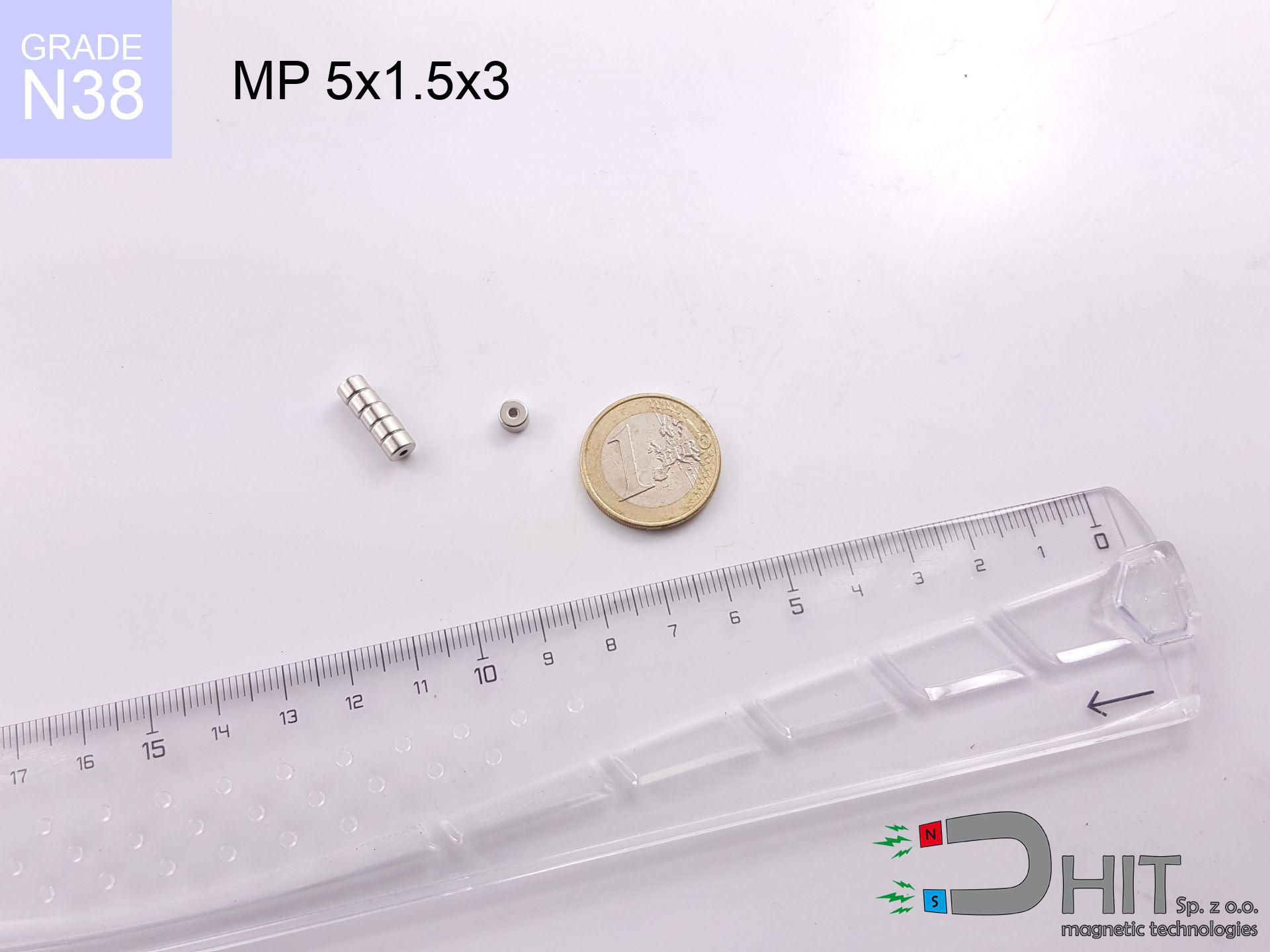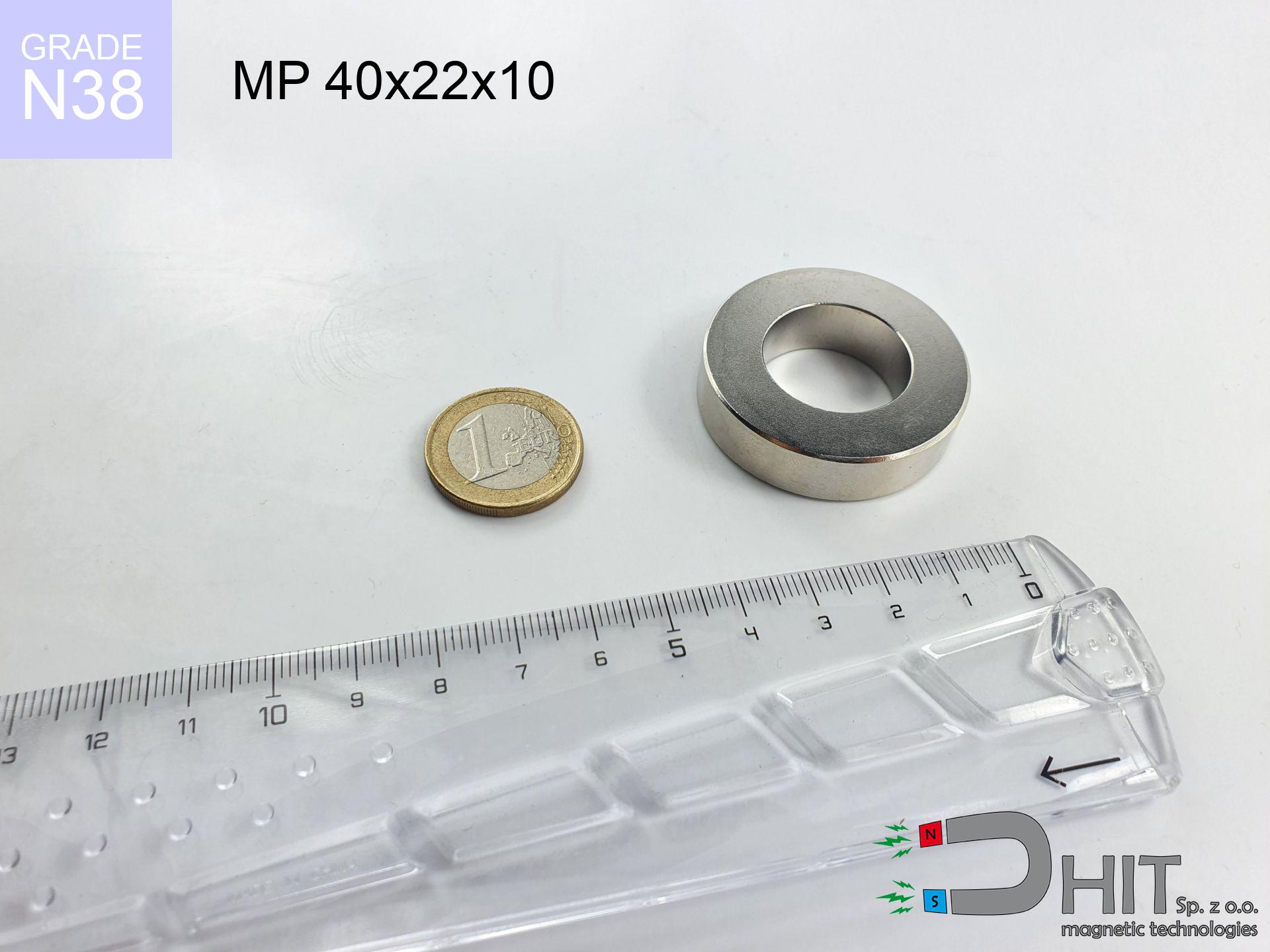SM 32x325 [2xM8] / N42 - magnetic separator
magnetic separator
Catalog no 130378
GTIN/EAN: 5906301813262
Diameter Ø
32 mm [±1 mm]
Height
325 mm [±1 mm]
Weight
1740 g
Magnetic Flux
~ 8 000 Gauss [±5%]
971.70 ZŁ with VAT / pcs + price for transport
790.00 ZŁ net + 23% VAT / pcs
bulk discounts:
Need more?
Contact us by phone
+48 22 499 98 98
alternatively contact us using
form
the contact page.
Force as well as structure of magnetic components can be estimated using our
online calculation tool.
Same-day processing for orders placed before 14:00.
Detailed specification - SM 32x325 [2xM8] / N42 - magnetic separator
Specification / characteristics - SM 32x325 [2xM8] / N42 - magnetic separator
| properties | values |
|---|---|
| Cat. no. | 130378 |
| GTIN/EAN | 5906301813262 |
| Production/Distribution | Dhit sp. z o.o. |
| Country of origin | Poland / China / Germany |
| Customs code | 85059029 |
| Diameter Ø | 32 mm [±1 mm] |
| Height | 325 mm [±1 mm] |
| Weight | 1740 g |
| Material Type | Stainless steel AISI 304 / A2 |
| Magnetic Flux | ~ 8 000 Gauss [±5%] |
| Size/Mount Quantity | 2xM8 |
| Polarity | circumferential - 12 poles |
| Casing Tube Thickness | 1 mm |
| Manufacturing Tolerance | ±1 mm |
Magnetic properties of material N42
| properties | values | units |
|---|---|---|
| remenance Br [min. - max.] ? | 12.9-13.2 | kGs |
| remenance Br [min. - max.] ? | 1290-1320 | mT |
| coercivity bHc ? | 10.8-12.0 | kOe |
| coercivity bHc ? | 860-955 | kA/m |
| actual internal force iHc | ≥ 12 | kOe |
| actual internal force iHc | ≥ 955 | kA/m |
| energy density [min. - max.] ? | 40-42 | BH max MGOe |
| energy density [min. - max.] ? | 318-334 | BH max KJ/m |
| max. temperature ? | ≤ 80 | °C |
Physical properties of sintered neodymium magnets Nd2Fe14B at 20°C
| properties | values | units |
|---|---|---|
| Vickers hardness | ≥550 | Hv |
| Density | ≥7.4 | g/cm3 |
| Curie Temperature TC | 312 - 380 | °C |
| Curie Temperature TF | 593 - 716 | °F |
| Specific resistance | 150 | μΩ⋅cm |
| Bending strength | 250 | MPa |
| Compressive strength | 1000~1100 | MPa |
| Thermal expansion parallel (∥) to orientation (M) | (3-4) x 10-6 | °C-1 |
| Thermal expansion perpendicular (⊥) to orientation (M) | -(1-3) x 10-6 | °C-1 |
| Young's modulus | 1.7 x 104 | kg/mm² |
Table 1: Rod construction
SM 32x325 [2xM8] / N42
| Parameter | Value | Description / Unit |
|---|---|---|
| Diameter (Ø) | 32 | mm |
| Total length | 325 | mm (L) |
| Active length | 289 | mm |
| Section count | 12 | modules |
| Dead zone | 36 | mm (2x 18mm starter) |
| Weight (est.) | ~1986 | g |
| Active area | 291 | cm² (Area) |
| Housing material | AISI 304 | 1.4301 (Inox) |
| Surface finish | Ra < 0.8 µm | Polished |
| Temp. class | 80°C | Standard (N) |
| Force loss (at max °C) | -12.8% | Reversible loss (physics) |
| Force (calculated) | 26.2 | kg (theor.) |
| Induction (surface) | ~8 000 | Gauss (Max) |
Chart 2: Field profile (12 sections)
Chart 3: Temperature performance
Chemical composition
| iron (Fe) | 64% – 68% |
| neodymium (Nd) | 29% – 32% |
| boron (B) | 1.1% – 1.2% |
| dysprosium (Dy) | 0.5% – 2.0% |
| coating (Ni-Cu-Ni) | < 0.05% |
Ecology and recycling (GPSR)
| recyclability (EoL) | 100% |
| recycled raw materials | ~10% (pre-cons) |
| carbon footprint | low / zredukowany |
| waste code (EWC) | 16 02 16 |
Check out also deals
Advantages as well as disadvantages of Nd2Fe14B magnets.
Advantages
- They have unchanged lifting capacity, and over more than 10 years their performance decreases symbolically – ~1% (in testing),
- They retain their magnetic properties even under strong external field,
- A magnet with a metallic silver surface is more attractive,
- Magnets exhibit impressive magnetic induction on the active area,
- Through (appropriate) combination of ingredients, they can achieve high thermal strength, enabling operation at temperatures approaching 230°C and above...
- Possibility of accurate modeling and modifying to defined needs,
- Universal use in high-tech industry – they find application in magnetic memories, electric motors, medical devices, as well as other advanced devices.
- Compactness – despite small sizes they generate large force, making them ideal for precision applications
Disadvantages
- To avoid cracks upon strong impacts, we recommend using special steel housings. Such a solution secures the magnet and simultaneously improves its durability.
- When exposed to high temperature, neodymium magnets suffer a drop in power. Often, when the temperature exceeds 80°C, their strength decreases (depending on the size, as well as shape of the magnet). For those who need magnets for extreme conditions, we offer [AH] versions withstanding up to 230°C
- Due to the susceptibility of magnets to corrosion in a humid environment, we recommend using waterproof magnets made of rubber, plastic or other material resistant to moisture, in case of application outdoors
- Limited possibility of making nuts in the magnet and complex shapes - preferred is casing - magnetic holder.
- Health risk resulting from small fragments of magnets are risky, when accidentally swallowed, which is particularly important in the aspect of protecting the youngest. Additionally, small components of these magnets can be problematic in diagnostics medical when they are in the body.
- Due to neodymium price, their price is higher than average,
Lifting parameters
Breakaway strength of the magnet in ideal conditions – what contributes to it?
- using a sheet made of high-permeability steel, serving as a circuit closing element
- possessing a thickness of at least 10 mm to ensure full flux closure
- with a surface perfectly flat
- with zero gap (no impurities)
- under perpendicular application of breakaway force (90-degree angle)
- in stable room temperature
Lifting capacity in real conditions – factors
- Space between magnet and steel – every millimeter of separation (caused e.g. by varnish or dirt) diminishes the magnet efficiency, often by half at just 0.5 mm.
- Force direction – remember that the magnet has greatest strength perpendicularly. Under shear forces, the capacity drops significantly, often to levels of 20-30% of the maximum value.
- Wall thickness – thin material does not allow full use of the magnet. Magnetic flux penetrates through instead of converting into lifting capacity.
- Steel grade – the best choice is high-permeability steel. Stainless steels may generate lower lifting capacity.
- Plate texture – ground elements guarantee perfect abutment, which improves force. Uneven metal weaken the grip.
- Temperature influence – high temperature reduces pulling force. Too high temperature can permanently damage the magnet.
Lifting capacity testing was carried out on plates with a smooth surface of suitable thickness, under a perpendicular pulling force, whereas under attempts to slide the magnet the holding force is lower. In addition, even a small distance between the magnet and the plate lowers the lifting capacity.
Warnings
This is not a toy
Adult use only. Tiny parts can be swallowed, leading to severe trauma. Keep out of reach of children and animals.
Electronic devices
Powerful magnetic fields can erase data on payment cards, hard drives, and storage devices. Keep a distance of min. 10 cm.
Dust explosion hazard
Fire warning: Neodymium dust is explosive. Avoid machining magnets in home conditions as this may cause fire.
Warning for allergy sufferers
Certain individuals have a contact allergy to Ni, which is the standard coating for neodymium magnets. Frequent touching can result in skin redness. It is best to wear safety gloves.
Do not overheat magnets
Avoid heat. NdFeB magnets are susceptible to temperature. If you require operation above 80°C, ask us about HT versions (H, SH, UH).
Fragile material
Protect your eyes. Magnets can explode upon violent connection, launching shards into the air. Wear goggles.
Compass and GPS
Be aware: neodymium magnets produce a field that disrupts precision electronics. Maintain a separation from your phone, tablet, and GPS.
Bodily injuries
Watch your fingers. Two powerful magnets will snap together immediately with a force of massive weight, crushing anything in their path. Exercise extreme caution!
Caution required
Before use, read the rules. Uncontrolled attraction can destroy the magnet or injure your hand. Be predictive.
Medical implants
Patients with a ICD must keep an large gap from magnets. The magnetic field can stop the functioning of the life-saving device.

![Magnetic bar SM 32x325 [2xM8] / N42 Magnetic bar SM 32x325 [2xM8] / N42](https://cdn3.dhit.pl/graphics/banners/magnet.webp)
![SM 32x325 [2xM8] / N42 - magnetic separator](https://cdn3.dhit.pl/graphics/products/sm-32x325-2xm8-fog.jpg)


![SM 25x175 [2xM8] / N52 - magnetic separator SM 25x175 [2xM8] / N52 - magnetic separator](https://cdn3.dhit.pl/graphics/products/sm-25x175-2xm8-gif.jpg)


